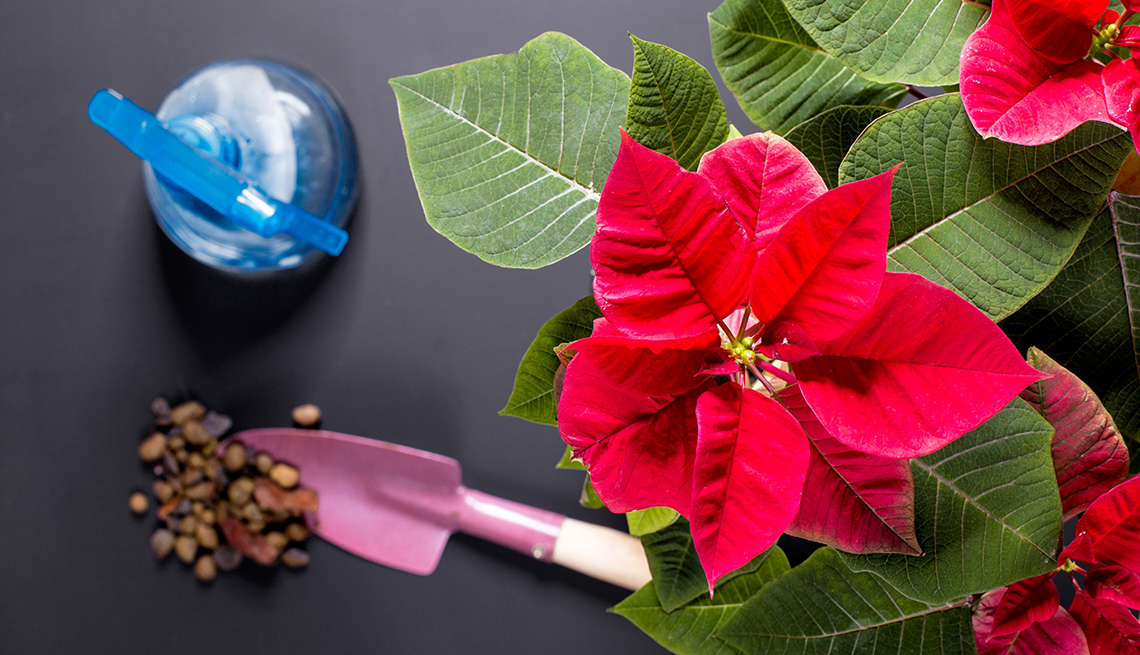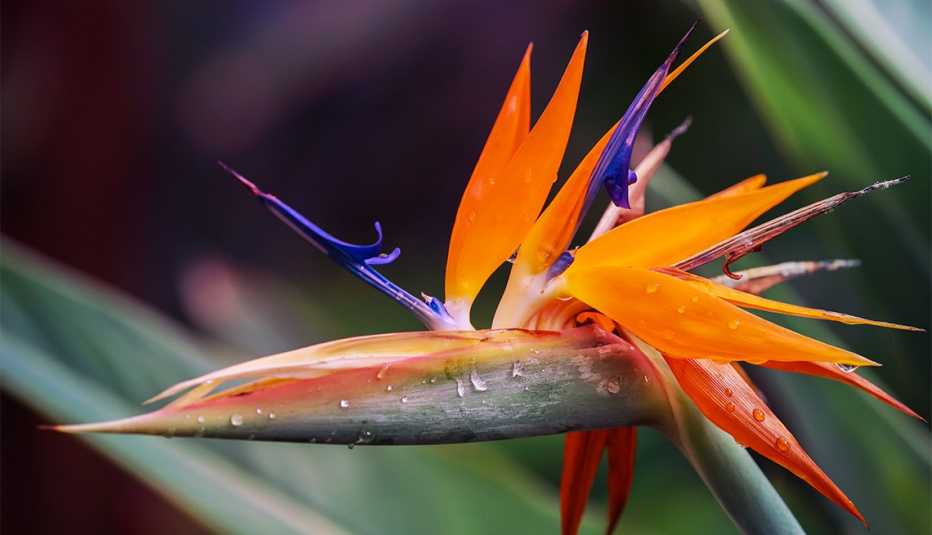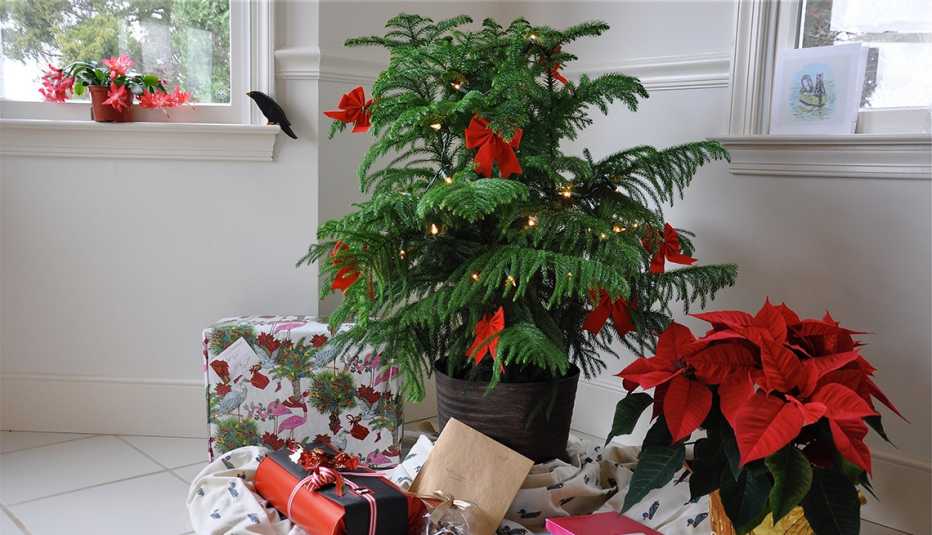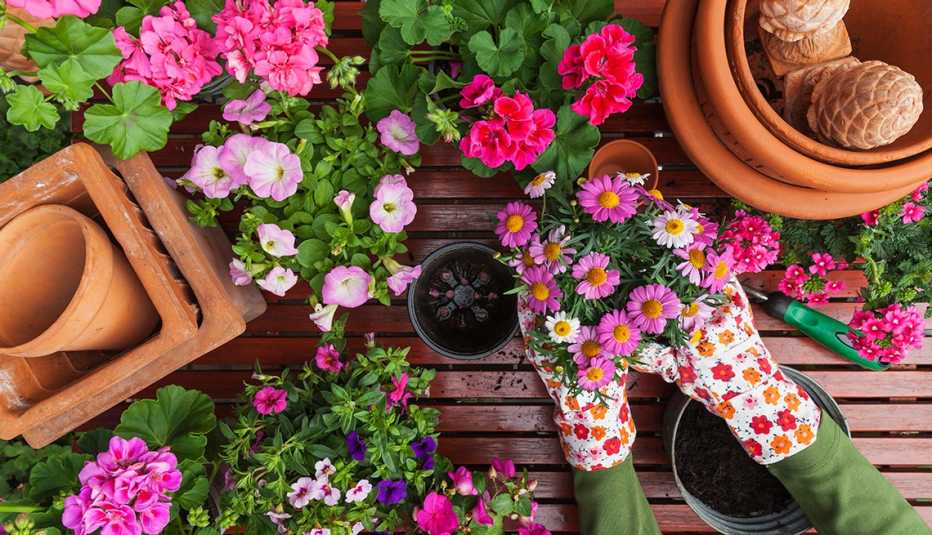Christmas cactus
Depending on the variety, schlumbergera, a tropical cactus that grows in the clefts of trees in Brazil, can bloom from Thanksgiving through the December holidays, says McComas. While blooming, they like bright light and well-drained soil and humidity, so mist them occasionally. The North Carolina Cooperative Extension recommends withholding water for six weeks after blooming, then watering just enough that the soil doesn’t dry out. If you want your plant to rebloom, try cool temperatures — 60 to 65 degrees — and at least 13 hours of darkness a day starting in October.
Cyclamen
These perennials come in a range of pinks and grow from a corm-like tuber that sits partly above the soil. They like bright light though not direct sunlight, McComas says, and prefer cool temperatures — 55 to 65 degrees. They also like humidity, so place your plant on a saucer of damp pebbles. Always water from below so the tuber doesn’t rot, and remove dead flowers as they fade. McComas suggests applying some standard houseplant fertilizer every two weeks or so.
Daniela Duncan/Getty Images
Bird of paradise
These dramatic show-offs are often featured as cut flowers, but because it’s difficult to get them to bloom indoors, they’re frequently sold as tall green foliage plants with wide shiny leaves that can be 11 inches across and 2 feet long, Thomas says. They like bright, direct light and humidity. “If you mist it a couple of times a week and keep it in a room where you could theoretically read a book with the light off ... you could keep a bird of paradise almost anywhere,” she says.
Hellebores
This showy bloomer is called the Christmas or Lenten rose, since it blooms from December into early spring. But it is really related to the peony family, according to the North Carolina extension service. Hellebores come in a range of colors from burgundy to yellow to white. Indoors, they like cool temperatures and bright light, and do not like to be soggy. In many areas, this is a gift that keeps on giving: Hellebores, which are perennial, can be planted in a shady or semi-shady part of the garden once the ground has thawed.
Lynn Hunt / EyeEm / Getty Images
Norfolk Island pine
These little trees are often sold with bows or holiday decorations as miniature Christmas trees. The good news is that they are slow growers, because they can reach up to 8 feet indoors, according to the University of Florida’s Institute of Food and Agricultural Sciences. In their native habitat in the tropical South Pacific, these ancient conifers can grow to 200 feet. Indoors, they need bright light and humidity, doable by placing the pot on a saucer filled with pebbles and water.
Succulents
These are especially popular in places like Southern California, where they can eventually go out into the garden. They often come planted in boxes or trays and should be happy like that for a couple of months, Floyd says. “But at some point, they’re going to start to grow a little bit larger than what that tray accommodates, so at that point, it makes sense to transplant them into separate little plants.” Plants that are natives of dry climates — poinsettias, for example — need very well-drained soil, she says. “You never want to water them, until the soil is very dry to the touch.”
Cut flowers
Centerpieces and other floral arrangements featuring cut flowers are also holiday mainstays and can bring a touch of spring inside throughout the winter. To keep the arrangements fresh, change the water frequently, Floyd says. “As soon as it’s delivered, you make sure the water is all the way up to the brim,” she says. Just stick it in the sink, overflow the container with water, then let it sit on a towel until it’s dry enough for the table. While some cut flowers come with packets of nutrients, really fresh arrangements shouldn’t need them, Floyd says.
Editor's note: This article was originally published on December 28, 2021. It has been updated to reflect new information.










































































